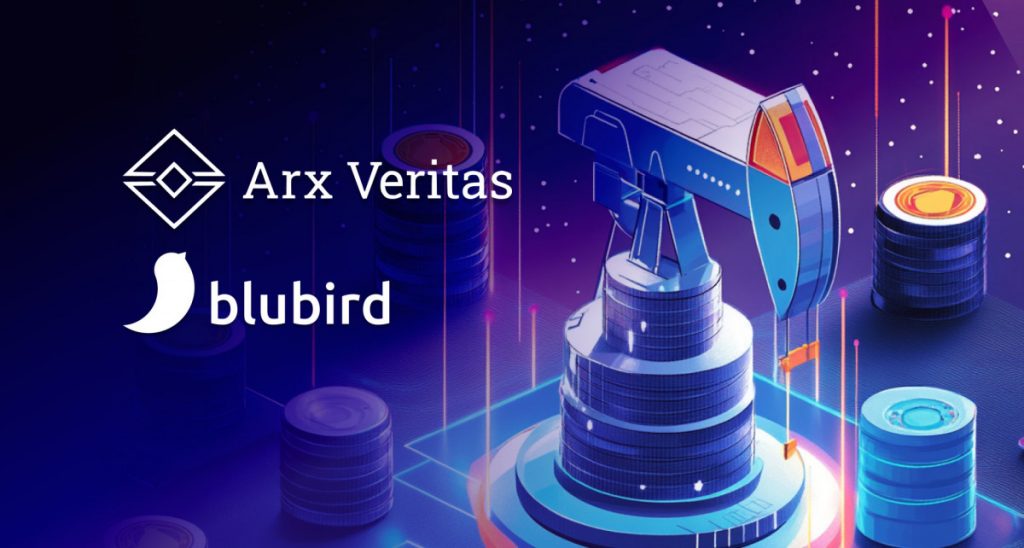Blubird CEO Corey Billington Highlights $32B ERA Tokenization As Transformative Step For ESG Investing And Corporate Sustainability


In Brief
Arx Veritas and Blubird have tokenized $32 billion in Emission Reduction Assets on-chain, preventing nearly 395 million tons of CO₂ and establishing a scalable, verifiable market for ESG-aligned investments.

Platform focused on bringing legacy wealth and sustainability assets on-chain, Arx Veritas announced that it has tokenized $32 billion worth of Emission Reduction Assets (ERAs) on the Redbelly Network through institutional-grade digital asset infrastructure provider Blubird. The tokenized assets, which include capped oil wells and decommissioned coal mines, represent a total of 394,737,149 tons of CO₂ emissions prevented, marking a major milestone in the on-chain representation of ESG-aligned investments.
Emission Reduction Assets are real-world initiatives, such as capping oil wells or closing coal mines, that measurably prevent the release of CO₂ and other greenhouse gases. By tokenizing $32 billion in ERAs, Arx Veritas, Blubird, and Redbelly Network are creating a transparent, verifiable, and liquid market for ESG-compliant investments, establishing a new standard for the financing and monitoring of sustainability efforts. Unlike carbon credits, which represent standardized tradable certificates for a specific ton of CO₂ offset, ERAs correspond directly to the underlying projects that generate these reductions and can subsequently be quantified into units or credits. Meeting Environmental, Social, and Governance (ESG) criteria, these assets are suitable for investors and corporations aiming to demonstrate responsible and sustainable practices.
The tokenized ERAs are now active on the Blubird-powered marketplace, demonstrating the scalability and potential of real-world environmental asset tokenization. They are insured by Ryskex, a Lloyd’s Lab alumni company recognized by one of the world’s leading insurance institutions, providing an additional layer of credibility and trust. The tokenized ERAs prevent 394,737,149 tons of CO₂ emissions, a figure derived from emissions that would have resulted from extracting, processing, transporting, and burning coal, as well as pollutants avoided by capping abandoned oil wells. To contextualize, this prevented emission volume is equivalent to nearly 395 million roundtrip flights between New York and London per passenger, 986 billion miles driven by an average car (approximately 39.6 million times around the equator), the annual electricity usage of more than 82 million US households, or roughly 105 times Iceland’s yearly CO₂ emissions.
Blubird has observed strong institutional interest in the tokenization of ESG-aligned assets, with over half a billion dollars’ worth of transactions currently under negotiation and an institutional purchase approaching completion. The platform aims to tokenize an additional $18 billion in assets by the end of 2026 as partnerships expand across industries. Blubird’s tokenization pipeline encompasses a wide range of traditional and alternative asset classes, including financial instruments such as debt, bonds, commercial paper, and receivables; commodities and physical goods, from precious metals to agricultural products; and real assets such as land, infrastructure, and equipment. The platform also supports tokenization of art and collectibles, intellectual property and royalties, insurance-linked assets, tickets and event access, luxury vehicles, and supply-chain provenance. Additionally, Blubird is enabling ESG and impact categories, including carbon credits and environmental assets, as well as emerging use cases such as fan tokens, tokenized funds, legal contracts, and synthetic derivatives.
Amid a shift toward clearer regulatory compliance, particularly in the US, Blubird is engaging directly with institutions and asset owners. The platform provides modular, compliance-ready infrastructure designed to protect clients from the significant risks associated with cutting corners on compliance in the Web3 ecosystem.
Blubird’s Corey Billington Highlights ERA Tokenization As Game-Changer For ESG Investing And Corporate Sustainability Strategies
Following the announcement, Mpost contacted Corey Billington, Founder and CEO of Blubird, for comment. In a conversation with Mpost, Corey Billington emphasized that tokenizing ERAs rather than carbon credits represents a major differentiator and discussed how he expects this shift to influence investor behavior and corporate ESG strategies over the next five to ten years.
Blubird’s founder explained that the company’s approach shifts financing directly to the source of emission reduction rather than focusing solely on trading downstream credits. By tokenizing Emission Reduction Assets, investors gain direct exposure to activities such as capping oil wells or upgrading process heat systems. This method differs from traditional offset markets that operate on commodity-style pricing, as it emphasizes project-finance underwriting supported by enhanced data rights and structured yields linked to verified reductions.
“For corporates, it restructures the approach from ‘pay to offset’ to ‘invest to reduce.’ Instead of buying offsets at year-end, sustainability teams can pre-contract ERAs that align with their decarbonization plans and budget cycles. The tokens contain MRV (monitoring, reporting, and verification) metadata and operating telemetry on-chain. That gives you immutable audit trails and dramatically reduces greenwashing risk,” he told Mpost.
The most important aspect, according to Corey Billington, is Scope 3 traceability.
“We embed supplier IDs and contract terms directly in tokens, so companies can trace reduction procurement across their entire supply chains. We’re essentially turning environmental impact into actual investable infrastructure instead of treating it like compliance checkboxes,” he highlighted.
When asked about the main compliance and regulatory challenges hindering the institutional adoption of ERA tokenization, the expert explained that the issue largely stems from fragmentation. Environmental instruments may be treated as commodities in one jurisdiction, classified as securities in another, or viewed as compliance tools elsewhere. Combined with factors such as cross-border transactions, settlement through stablecoins, and custody requirements, this creates a complex regulatory landscape that often deters institutional participation.
“We solve this with a compliance-first issuance stack. Our configurable token standards handle permissioned transfers, allowlists, and rule-based hooks to respect offering constraints across different jurisdictions. We’ve built integrated KYC/AML and sanctions screening directly into the platform, along with Travel Rule-ready workflows for cross-border compliance,” he noted.
In addition, the platform incorporates an audit-level registry system that links on-chain metadata with off-chain documentation such as methodologies and verifier reports using cryptographic hashes. This structure provides regulators and auditors with consistent monitoring, reporting, and verification records, as well as chain-of-custody protections designed to meet oversight requirements.
“We’re also taking a modular approach to venue access, partnering with broker-dealers and alternative trading systems where needed, so institutions can get compliant primary issuance and controlled secondary liquidity without regulatory blind spots,” Corey Billington told Mpost.
Blubird has outlined plans to tokenize an additional $18 billion in assets by 2026, aiming to expand while maintaining transparency, verifiability, and measurable environmental outcomes. According to Corey Billington, this pipeline extends well beyond Emission Reduction Assets, encompassing carbon-linked instruments, commodity offtake agreements, tokenized royalties, infrastructure-based assets, and a broad mix of metals and financial products.
“Each category has different diligence requirements and regulatory hooks, but we apply the same core principles: verifiable data, standardized disclosures, and third-party oversight,” he told Mpost. “For ERAs specifically, we use progressive minting tied to MRV and verifier attestations, along with impact dashboards that clearly label forward versus verified units. For other asset classes, we deploy standardized disclosure packs anchored on-chain with jurisdictional compliance built into the token standard,” he added.
Blubird achieves scalability by creating standardized workflows for each asset type and automating the collection of supporting evidence and compliance verification, while retaining human compliance committees to provide final approval before assets are launched. The platform is designed to adapt across various asset classes, ensuring that Emission Reduction Assets continue to uphold their environmental validation standards. The overarching objective is to grow capacity responsibly, preserving the transparency and verifiability that underpin trust in the system.
Disclaimer
In line with the Trust Project guidelines, please note that the information provided on this page is not intended to be and should not be interpreted as legal, tax, investment, financial, or any other form of advice. It is important to only invest what you can afford to lose and to seek independent financial advice if you have any doubts. For further information, we suggest referring to the terms and conditions as well as the help and support pages provided by the issuer or advertiser. MetaversePost is committed to accurate, unbiased reporting, but market conditions are subject to change without notice.
About The Author
Alisa, a dedicated journalist at the MPost, specializes in cryptocurrency, zero-knowledge proofs, investments, and the expansive realm of Web3. With a keen eye for emerging trends and technologies, she delivers comprehensive coverage to inform and engage readers in the ever-evolving landscape of digital finance.
More articles

Alisa, a dedicated journalist at the MPost, specializes in cryptocurrency, zero-knowledge proofs, investments, and the expansive realm of Web3. With a keen eye for emerging trends and technologies, she delivers comprehensive coverage to inform and engage readers in the ever-evolving landscape of digital finance.


















































